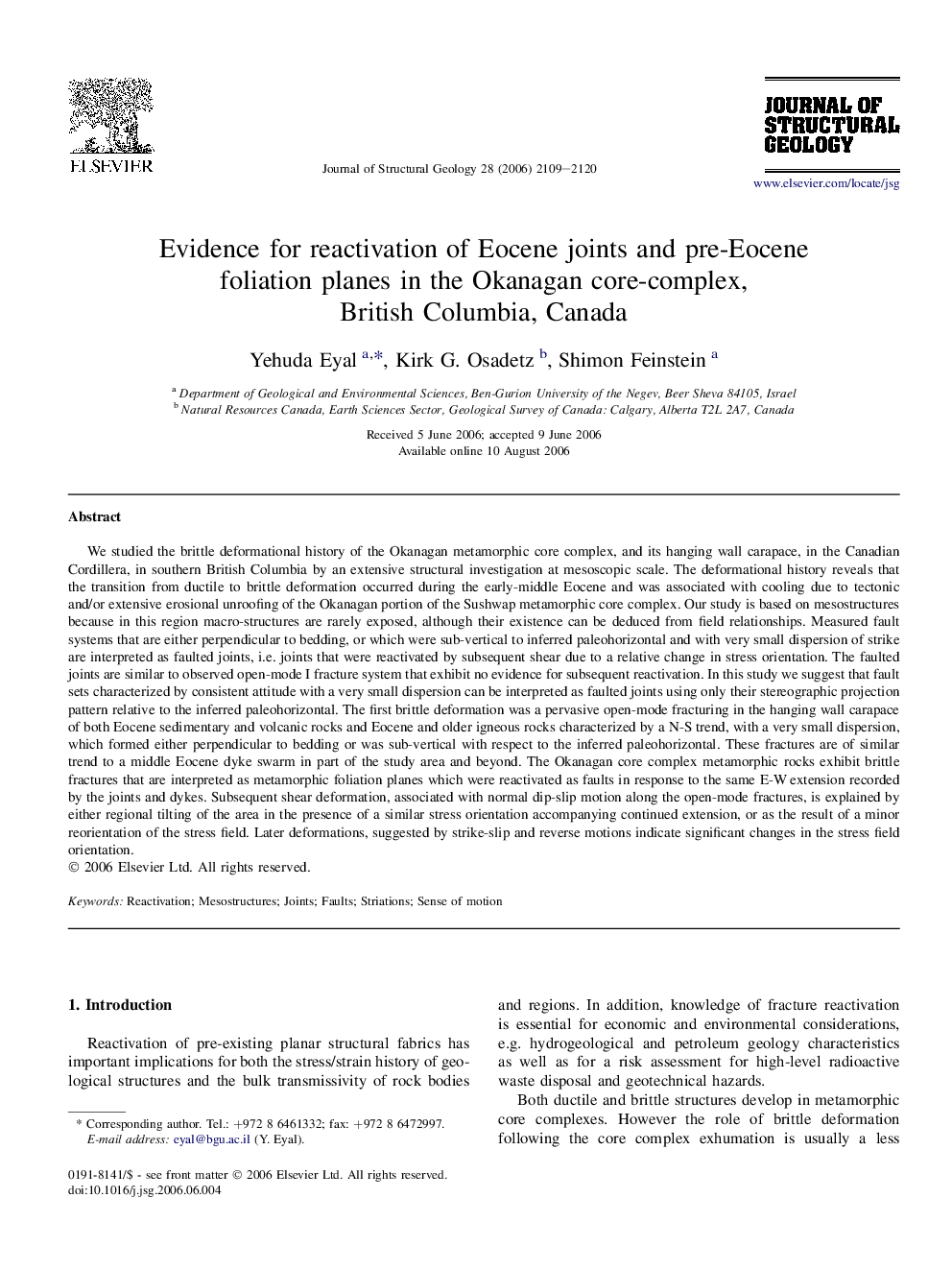| کد مقاله | کد نشریه | سال انتشار | مقاله انگلیسی | نسخه تمام متن |
|---|---|---|---|---|
| 4734495 | 1357126 | 2006 | 12 صفحه PDF | دانلود رایگان |
عنوان انگلیسی مقاله ISI
Evidence for reactivation of Eocene joints and pre-Eocene foliation planes in the Okanagan core-complex, British Columbia, Canada
دانلود مقاله + سفارش ترجمه
دانلود مقاله ISI انگلیسی
رایگان برای ایرانیان
کلمات کلیدی
موضوعات مرتبط
مهندسی و علوم پایه
علوم زمین و سیارات
زمین شناسی
پیش نمایش صفحه اول مقاله

چکیده انگلیسی
We studied the brittle deformational history of the Okanagan metamorphic core complex, and its hanging wall carapace, in the Canadian Cordillera, in southern British Columbia by an extensive structural investigation at mesoscopic scale. The deformational history reveals that the transition from ductile to brittle deformation occurred during the early-middle Eocene and was associated with cooling due to tectonic and/or extensive erosional unroofing of the Okanagan portion of the Sushwap metamorphic core complex. Our study is based on mesostructures because in this region macro-structures are rarely exposed, although their existence can be deduced from field relationships. Measured fault systems that are either perpendicular to bedding, or which were sub-vertical to inferred paleohorizontal and with very small dispersion of strike are interpreted as faulted joints, i.e. joints that were reactivated by subsequent shear due to a relative change in stress orientation. The faulted joints are similar to observed open-mode I fracture system that exhibit no evidence for subsequent reactivation. In this study we suggest that fault sets characterized by consistent attitude with a very small dispersion can be interpreted as faulted joints using only their stereographic projection pattern relative to the inferred paleohorizontal. The first brittle deformation was a pervasive open-mode fracturing in the hanging wall carapace of both Eocene sedimentary and volcanic rocks and Eocene and older igneous rocks characterized by a N-S trend, with a very small dispersion, which formed either perpendicular to bedding or was sub-vertical with respect to the inferred paleohorizontal. These fractures are of similar trend to a middle Eocene dyke swarm in part of the study area and beyond. The Okanagan core complex metamorphic rocks exhibit brittle fractures that are interpreted as metamorphic foliation planes which were reactivated as faults in response to the same E-W extension recorded by the joints and dykes. Subsequent shear deformation, associated with normal dip-slip motion along the open-mode fractures, is explained by either regional tilting of the area in the presence of a similar stress orientation accompanying continued extension, or as the result of a minor reorientation of the stress field. Later deformations, suggested by strike-slip and reverse motions indicate significant changes in the stress field orientation.
ناشر
Database: Elsevier - ScienceDirect (ساینس دایرکت)
Journal: Journal of Structural Geology - Volume 28, Issue 11, November 2006, Pages 2109-2120
Journal: Journal of Structural Geology - Volume 28, Issue 11, November 2006, Pages 2109-2120
نویسندگان
Yehuda Eyal, Kirk G. Osadetz, Shimon Feinstein,